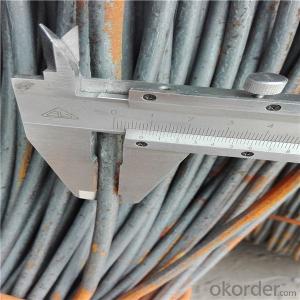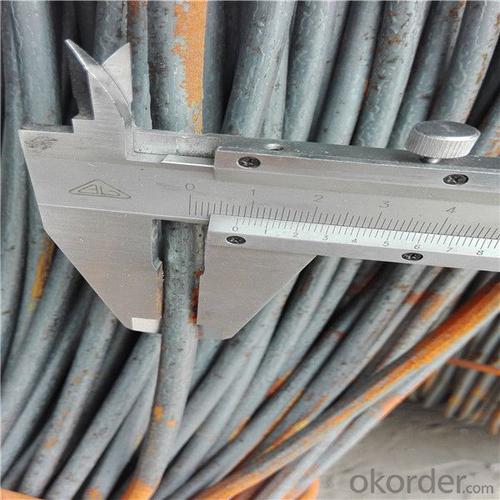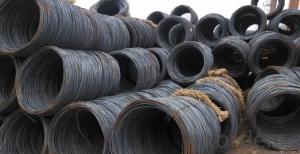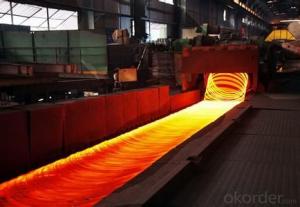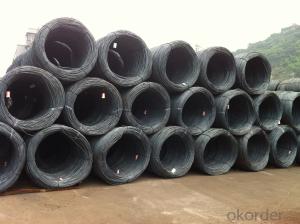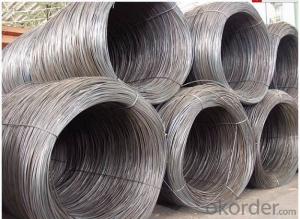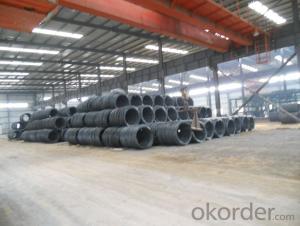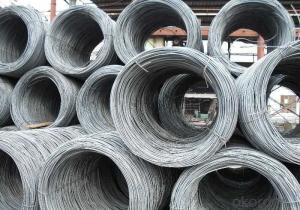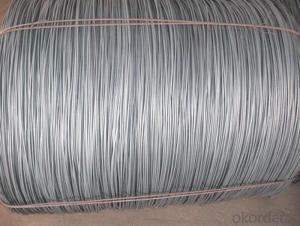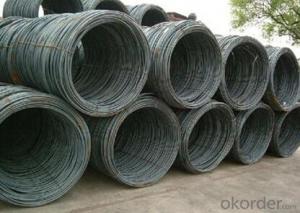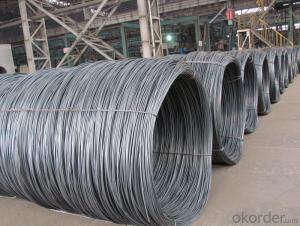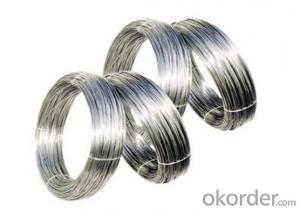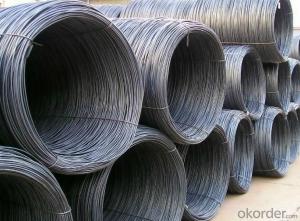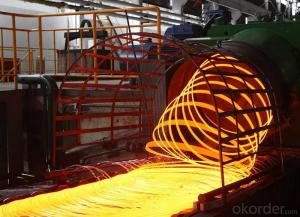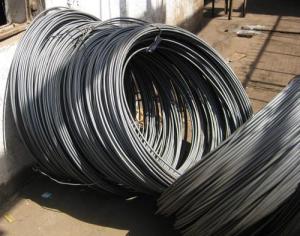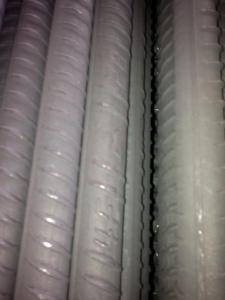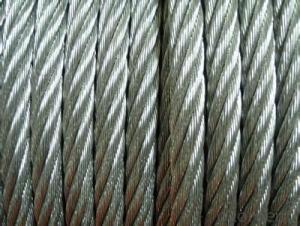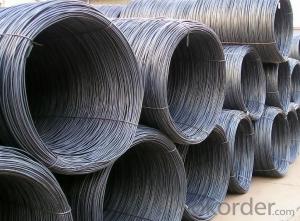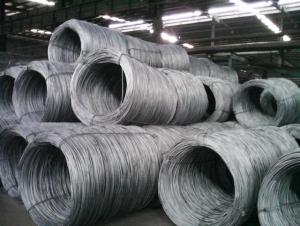Steel wire rod in coils hot rolled Sea 1008
- Loading Port:
- China main port
- Payment Terms:
- TT OR LC
- Min Order Qty:
- 100 m.t.
- Supply Capability:
- 15342 m.t./month
OKorder Service Pledge
OKorder Financial Service
You Might Also Like
Specification
Wire rod is used for many different products. Depending upon how it is cold formed and heat treated,
wire is used, for example, to produce not only wire ropes, barbed wire, wire mesh and nails, but also
springs, welded wire mesh and reinforcement wire.
Mainly used in building and construction as binding wire, tie wire and baling wire; also can be
make for wire mesh
Our service:
(1) We cooperate with famous factories with advanced equipment and well trained workers.
(2) We can provide factory price with trading company service.
(3) We continuously work on the improvement of our processes, guaranteeing
consistently high standards of quality to keep none compensation.
(4) We guarantee 24 hours response and 48 hours solution providing service.
(5) We accept small order quantity before formal cooperation.
(6) We deliver the agreed quality at the agreed time, reacting to changes in
customer wishes in a flexible way.
(7) Due to our volume and selling power, we have excellent freight rates with
shipping lines.
(8) We strive to always be fair and honest in our dealings with customers.
(9) We strive to work together with customers to achieve much more than we can
achieve alone.
(10) Through our passion and commitment we aim to be a market leader in all our
key markets. To maintain our position as market leader we must continue to add
value in all that we do.
Product Description :
Standard | AISI, ASTM, BS, DIN, GB, JIS |
Material/steel grade | Q195-Q235,SAE1006B,SAE1006CR, SAE1008B, SAE1008CR, SAE1010B, SAE1018B, or according to customers requirements |
Wire Gauge | 5.5-12mm |
Coil weight | 1.8-2.1mts |
MOQ | 25MT |
Delivery Time | 15-30 days after receipt of L/C or deposit by T/T |
Packing | In coil and load in container, if large quantity, by bulk vessel; Can be packed as customers' special requirements |
Payment terms | 1).100% irrevocable L/C at sight. 2).30% T/T prepaid and the balance against the copy of B/L. 3).30% T/T prepaid and the balance against L/C |
Application | widely used in machinery parts, manufacturing industry, electronics industry, metal tools and others |
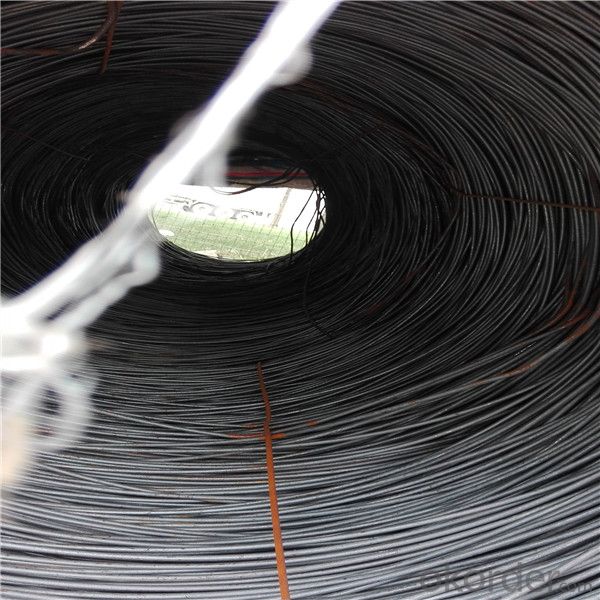
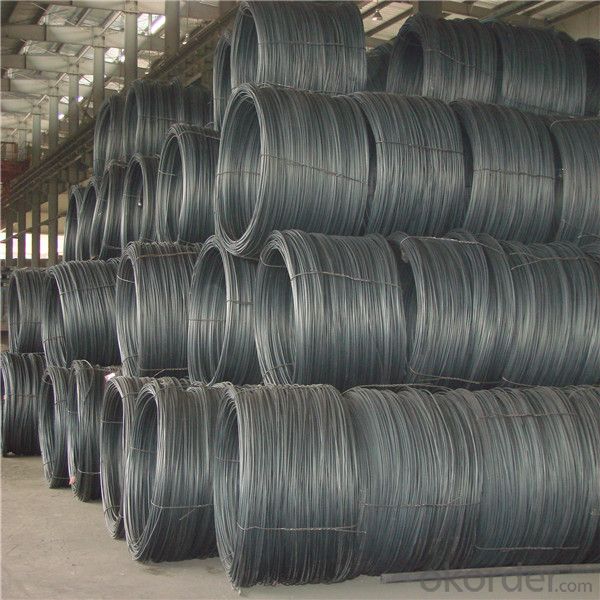
Application :
Mainly used in building and construction as binding wire, tie wire and baling wire; also can be make
for wire mesh.
Packing :
Hot-rolled wire rod is held in a unit with at least four steel straps in the
transverse direction and transported and stored without further packaging.
Before
the steel strapping is applied, the wire rod must be sufficiently compressed.
The strapping is fixed in the transverse direction with a single circumferential
strap so that the strapping does not slip and cause the coil to come apart.
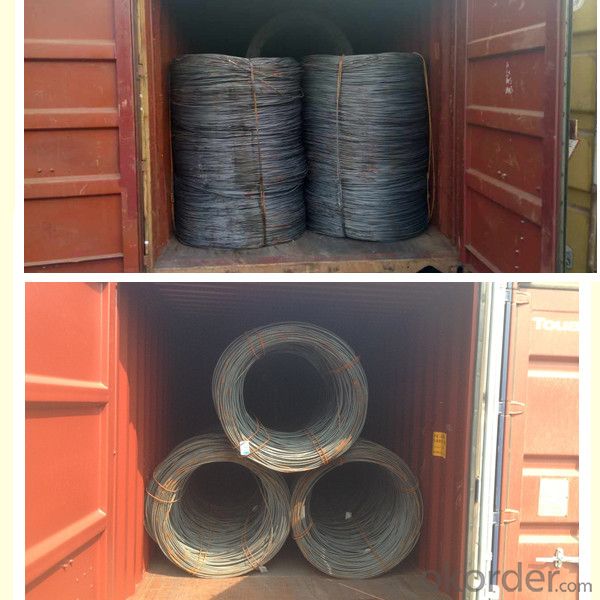
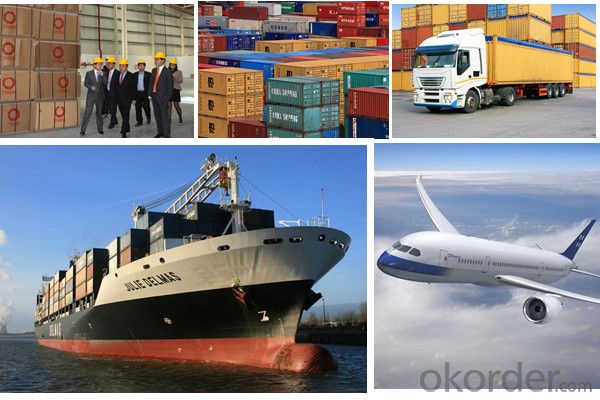
FAQ:
1.Q:Can you accept mixed order?
A: Yes, mixed acceptable .
2. Q: How can I buy CNBM products in my country?
A:Please send us an inquiry or email ,we will reply to you if there is distributor in your country
3. Q: Can we visit your factory?
A: Warmly welcome. Once we have your schedule, we will arrange the
professional sales team to follow up your case.
4. Q: How long does it take to get the product if i place an order?
A:With the process of your requirements,we will pack and deliver in 3
-7 days. If it is by sea shipment,it will take 15-45 days depending on different locations
- Q: How is steel wire rod used in the manufacturing of wire for aerospace applications?
- The manufacturing of wire for aerospace applications heavily relies on steel wire rod. This component is crucial and serves as the primary raw material for producing high-quality wires that meet the demanding requirements of the aerospace industry. To enhance the mechanical properties and ensure purity, the steel wire rod undergoes a series of processes like cleaning, descaling, and heat treatment. These processes effectively remove any impurities or contaminants that could negatively affect the wire's performance or structural integrity. Once the steel wire rod is prepared, it is drawn through a series of dies multiple times to decrease its diameter and increase its length. This drawing process is carefully monitored to maintain dimensional accuracy and consistent quality, ultimately achieving the desired wire thickness and strength. Following the drawing process, the wire undergoes additional treatments such as annealing or stress relieving to improve its ductility and resistance to fatigue. These treatments are crucial for aerospace applications, as the wire will experience extreme forces and temperature variations. The manufactured wire then undergoes rigorous testing and quality control measures to ensure it meets the stringent standards set by the aerospace industry. These tests involve examining the wire's mechanical properties, surface finish, and dimensional accuracy. Once the wire successfully passes all the necessary tests, it is ready for use in various aerospace applications. Wire manufactured from steel wire rod is commonly employed in aircraft control cables, wiring harnesses, fasteners, springs, and other critical components. Its high strength, durability, and corrosion resistance make it well-suited for withstanding the demanding conditions of aerospace environments. In conclusion, steel wire rod is a crucial component in the manufacturing of wire for aerospace applications. It undergoes various processes, drawing, and treatments to enhance its properties and achieve the desired wire dimensions and strength. Thorough testing ensures that the resulting wire meets aerospace standards. Ultimately, this wire plays a significant role in critical aerospace components, contributing to the safety and performance of aerospace systems.
- Q: What are the main factors affecting the price of steel wire rod?
- The main factors affecting the price of steel wire rod include the cost of raw materials, such as iron ore and scrap metal, as well as energy prices and transportation costs. Market demand and supply dynamics also play a significant role, along with global economic conditions, trade policies, and currency fluctuations. Additionally, factors like production capacity, technological advancements, and government regulations related to environmental and safety standards can impact the price of steel wire rod.
- Q: How is steel wire rod used in the manufacturing of wire forms for material handling?
- Steel wire rod is an essential component in the manufacturing of wire forms for material handling. It serves as the primary raw material that is transformed into various wire forms such as hooks, loops, and coils, which are widely utilized in material handling applications. The process begins with the steel wire rod being subjected to various manufacturing techniques such as drawing and rolling. These processes help to refine and shape the steel wire rod into the desired dimensions and properties required for material handling applications. The resulting wire is then further processed and treated to enhance its strength, durability, and resistance to corrosion. Once the steel wire rod has been transformed into wire forms, it is used in a multitude of ways within material handling equipment. For instance, wire forms are commonly used to create hooks that are attached to lifting devices such as cranes or hoists. These hooks provide a secure and reliable means of lifting and transporting heavy loads. Additionally, wire forms can be shaped into loops that are utilized as handles or gripping mechanisms on material handling tools and equipment. These loops enable operators to safely manipulate or control the movement of objects during material handling processes. Wire forms can also be coiled into springs that are employed in various material handling applications. These springs provide flexibility, shock absorption, and resistance to deformation, thereby ensuring the smooth and efficient operation of material handling equipment such as conveyor systems. In summary, steel wire rod is a fundamental component used in the manufacturing of wire forms for material handling. Through various manufacturing processes, steel wire rod is transformed into hooks, loops, and coils that are crucial for lifting, gripping, and controlling objects during material handling operations. The versatility and durability of wire forms make them indispensable in a wide range of material handling applications.
- Q: How is steel wire rod used in the manufacturing of wire mesh screens?
- Steel wire rod is used in the manufacturing of wire mesh screens by being drawn through a series of dies to reduce its diameter and increase its length. This process, known as wire drawing, results in a thin and strong wire that is then woven or welded together to create the mesh pattern. The steel wire rod provides the necessary strength and durability to the wire mesh screens, making them suitable for various applications such as filtration, separation, and protection.
- Q: How is steel wire rod used in the manufacturing of wire for conveyor belts?
- The manufacturing of wire for conveyor belts relies heavily on steel wire rod. To begin the process, steel wire rod is produced through hot rolling. This involves heating steel billets to high temperatures and passing them through rolling mills to reduce diameters and increase lengths. Once the steel wire rod is ready, it undergoes further processing to become suitable wire for conveyor belts. This involves drawing the wire rod through dies that progressively decrease diameter and increase length. This drawing process improves the wire's strength, ductility, and surface finish. The wire obtained from the steel wire rod is then typically coated for added durability and resistance to corrosion. Coating methods can include galvanization or applying a polymer coating. After coating, the wire is woven or welded into the desired configuration to form the conveyor belt. Weaving the wire creates a flexible and sturdy belt that smoothly moves materials along the conveyor system. Alternatively, welding the wire creates a solid belt suitable for heavy-duty applications. In both cases, the strength and quality of the wire used for conveyor belts are crucial for reliable and long-lasting performance. Steel wire rod provides the necessary strength and structural integrity to withstand demanding conditions such as high tension, heavy loads, and continuous operation. Overall, steel wire rod plays a vital role in the manufacturing of wire for conveyor belts. It serves as the raw material, providing the required strength and durability for the efficient operation of conveyor systems in various industries.
- Q: What are the different types of wire mesh for sieving made from steel wire rod?
- The different types of wire mesh for sieving made from steel wire rod include plain weave mesh, twill weave mesh, and dutch weave mesh. Plain weave mesh is the simplest and most common type, with evenly spaced wires in both the warp and weft directions. Twill weave mesh has a diagonal pattern, providing increased strength and durability. Dutch weave mesh has smaller openings in the weft direction, making it ideal for fine sieving applications.
- Q: How is steel wire rod used in the manufacturing of wire mesh filters?
- Steel wire rod is used in the manufacturing of wire mesh filters as it serves as the primary material for creating the mesh structure. The wire rod is drawn through a series of dies to reduce its diameter and increase its length, resulting in a thin, continuous wire. This wire is then woven or welded to form the intricate mesh pattern used in wire mesh filters. The strength and durability of steel wire rod make it an ideal choice for these filters, providing reliable filtration capabilities in various industrial applications.
- Q: What are the different types of steel wire rod coatings used for high-temperature resistance?
- There are several types of steel wire rod coatings commonly used for high-temperature resistance. Some of the most common coatings include zinc, aluminum, and various types of thermal spray coatings like ceramic or metallic coatings. These coatings provide a protective layer that helps the steel wire rod withstand extreme temperatures and resist oxidation and corrosion.
- Q: What are the different grades of steel wire rods?
- Steel wire rods come in various grades, each having its own distinct properties and uses. Some commonly used grades include: 1. Grade 1006 - 1018: These are low carbon steel wire rods, known for their high ductility and ease of shaping. They find applications in wire mesh, fencing, nails, and general-purpose wire products. 2. Grade 1030 - 1050: These medium carbon steel wire rods have a higher carbon content, which imparts increased strength and hardness. They are commonly employed in the manufacturing of springs, automotive parts, and machinery components. 3. Grade 1060 - 1095: High carbon steel wire rods, with the highest carbon content, possess exceptional strength and toughness. They are extensively used in the production of high-strength wires, piano wires, and industrial springs. 4. Alloy steel wire rods: These rods are made by incorporating various alloying elements like chromium, nickel, and molybdenum, which enhance their mechanical properties. They cater to specialized applications that demand specific attributes such as corrosion resistance, heat resistance, or high tensile strength. 5. Stainless steel wire rods: Made from stainless steel containing a minimum of 10.5% chromium, these rods provide excellent corrosion resistance. They are frequently employed in applications like wire rope, fishing nets, and surgical instruments. Each grade of steel wire rod is meticulously engineered to meet precise requirements in terms of strength, ductility, hardness, and other mechanical properties. The choice of grade depends on the intended application and the desired performance characteristics.
- Q: What are the potential applications of stainless steel wire rod?
- Stainless steel wire rod has a wide range of potential applications due to its strength, durability, and corrosion resistance. It can be used in the construction industry for reinforcing concrete structures, in the automotive industry for manufacturing various components, in the medical field for surgical instruments, and in the aerospace sector for aircraft manufacturing. Additionally, it is commonly utilized in the production of kitchenware, electrical appliances, and various industrial equipment.
Send your message to us
Steel wire rod in coils hot rolled Sea 1008
- Loading Port:
- China main port
- Payment Terms:
- TT OR LC
- Min Order Qty:
- 100 m.t.
- Supply Capability:
- 15342 m.t./month
OKorder Service Pledge
OKorder Financial Service
Similar products
Hot products
Hot Searches
Related keywords
